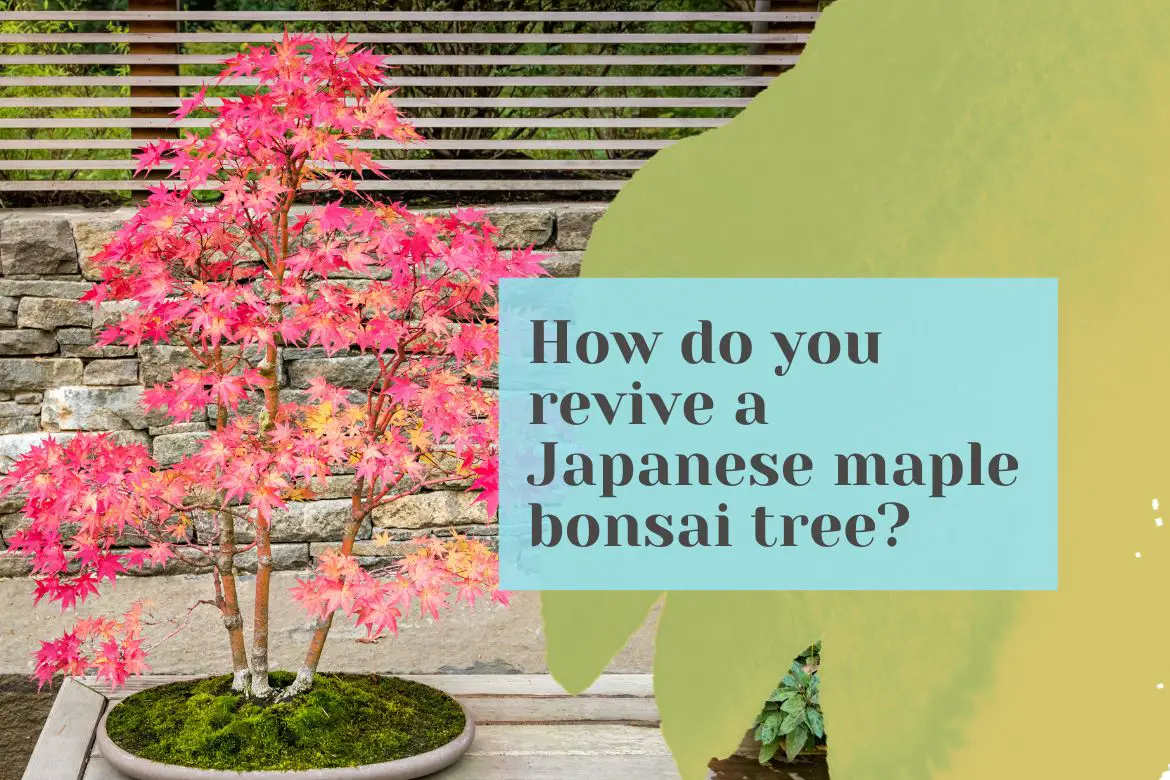Although easy to care for, no matter which Japanese maple bonsai variety you use, It will require proper care to thrive.
First signs of stress on a Japanese maple are stunted growth, discolored, dried, burnt and curled leaves and leaf drop.
There are few steps you will need to take to revive a dying Japanese maple bonsai.
Step 1: Identifying the issue
The first step in reviving a dying Japanese maple bonsai is to correctly identify the cause of stress.
The cause of stress can be anything such as Over-watering, Poor drainage, Soggy soil, Not keeping track of the rain, Underwatering, Over fertilization, Late frost, Pot-bound roots, Too much organic substrate in the bonsai soil, Growing Japanese maple bonsai indoors, Diseases, Pests, and Poor Ventilation. We have covered all these factors in detail in Why is my Japanese maple bonsai dying.
Only after correctly identifying the stress factor will corrective measures be successful. You should not assume that discoloration or dropping of leaves is caused by overwatering. Underwatering, fungal diseases, and several other factors can have the same effect.
Check for discoloration, spotting, dead or damaged foliage and branches. Also look for any pest infestations under the leaves and at the nodes of the branches. Continue reading Identifying and treating bonsai pest and diseases.
If everything looks fine, then check the drainage of the pot, ensure that the drainage holes are not clogged. Also ensure that the soil is free draining. You can find the recipes of best soil for your Japanese maple bonsai in Japanese maple bonsai care.
Check the roots. Make sure they are not pot bound. Also, inspect the roots for any diseases, rotting or root burns due to over-fertilization.
Check the location where the bonsai is kept. Ensure that the bonsai tree is receiving enough sunlight and ample ventilation.
Step 2: Performing corrective measures
Once the root cause of the problem has been identified, implement the corrective measure.
For example, repotting the bonsai if the roots are pot bound or damaged or if the soil is too compact.
If the tree has damaged or dead foliage/branches, prune them. Please read how to prune a Japanese maple bonsai tree. While pruning, make sure that you consistently sanitize the bonsai tools to reduce the risk of spread of any disease. The damage to the parts of the tree can be due to pests and diseases, a poor watering routine, frost or even bad placement of the bonsai. You can even partially or completely defoliate the bonsai. Continue reading How to defoliate Japanese maple bonsai.
One thing worth mentioning is that a weak tree will experience a lot of stress if it is repotted during the growing season. You should pay attention to the bonsai’s health after repotting it. If you have the option, repot that tree in the winter. The tree will suffer relatively less stress when it is dormant. Continue reading How to repot a bonsai tree.
In case you are going to plant it in the ground, make sure that the land doesn’t hold a lot of water for too long and do not plant the tree too deep. Also, do not apply a heap of mulch. Some Japanese maple growers apply a towering mound of mulch under the tree to protect the roots. This is not advisable for the good health of the tree. The growth of the tree will slowdown.
Furthermore, make sure that you do not apply any weedicide (weed killer) around the tree. You may accidentally kill the tree. Read the instructions on the packaging and avoid applying it in a windy day.
Step 3: After care
After you have performed all the necessary actions, keep the bonsai in a partially shaded location.
Apply water and a light liquid fertilizer so that the plant can get some boost in its recovery. It’s okay if the bonsai takes its time to recover.
This is the step where a few bonsai beginners make the mistake of over-watering and over-fertilizing the bonsai hoping it will help the tree recover faster. Do not do that. Do not overwater or over-fertilize at this stage as it will damage the plant even more.
A small amount of liquid fertilizer is applied for 2 reasons:
- Boost the recovery of the tree.
- To ensure that the growth does not continue for too long. The plant should not push new growth while entering the winter season. We have to make sure that the plant shuts down for dormancy at the right time.
Please read the guide on how to fertilize Japanese maple bonsai.
Conclusion
Reviving a dying Japanese maple bonsai tree requires patience, attention to detail, and proper care. By identifying the cause of the tree’s decline, addressing any underlying issues, and providing optimal conditions for growth, it is possible to nurse the tree back to health. With the right care and attention, a Japanese maple bonsai tree can thrive and provide years of beauty and enjoyment.
Check out Top 10 bonsai tree varieties for Japanese maple.

